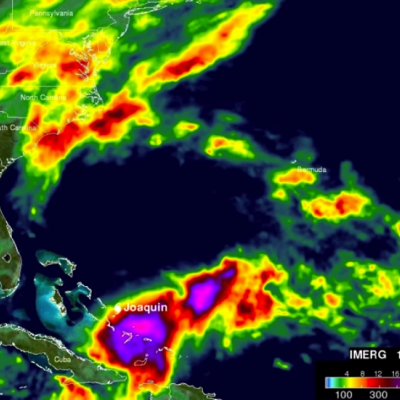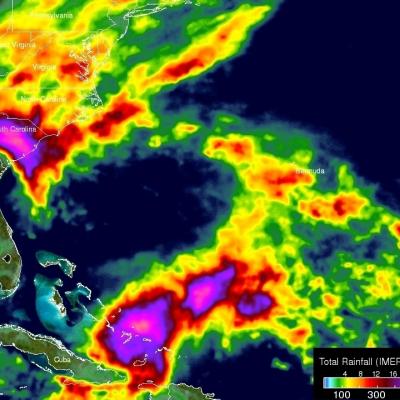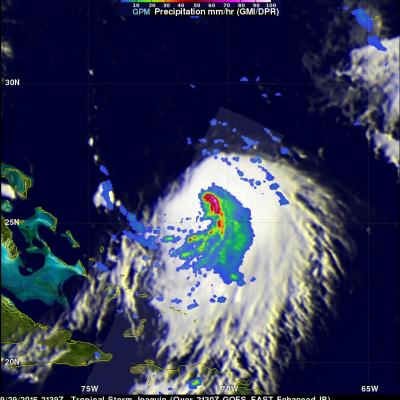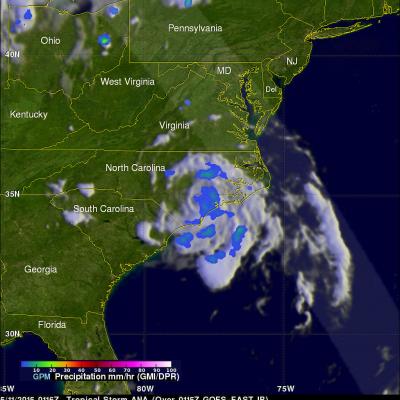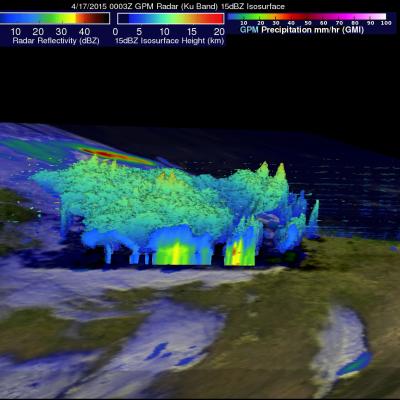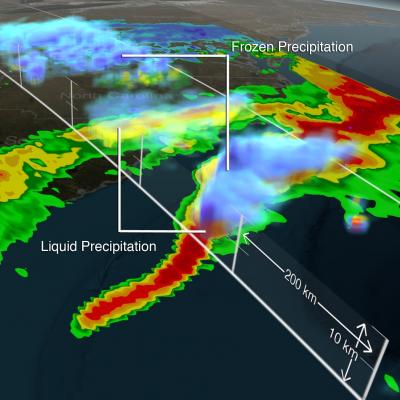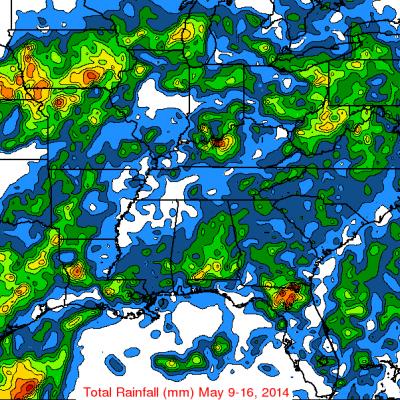Joaquin Becomes a Hurricane, Could Impact the US East Coast
Joaquin, which became a tropical storm Monday evening (EDT) midway between the Bahamas and Bermuda, has now formed into a hurricane, the 3rd of the season--the difference is Joaqin could impact the US East Coast. GPM captured this image of Joaquin late yesterday afternoon at 21:39 UTC (5:39 pm EDT) on the 29th of September as Joaquin was moving very slowly towards the west-southwest about 400 miles east of the northwestern Bahamas. This first image shows rain rates derived from GPM's GMI microwave imager (outer swath) and DPR space-borne precipitation radar (inner swath) overlaid on IR data


